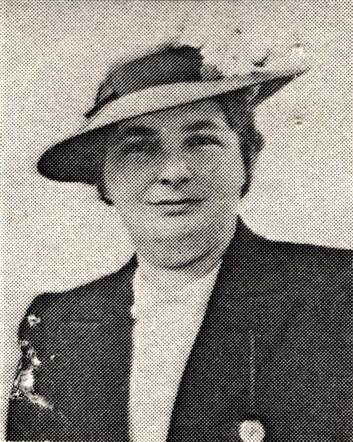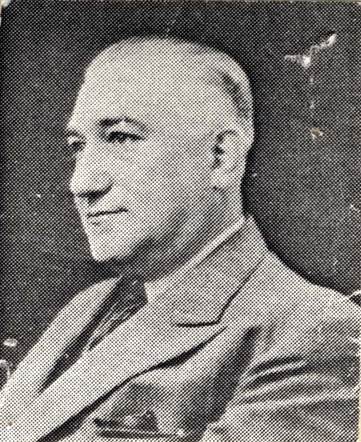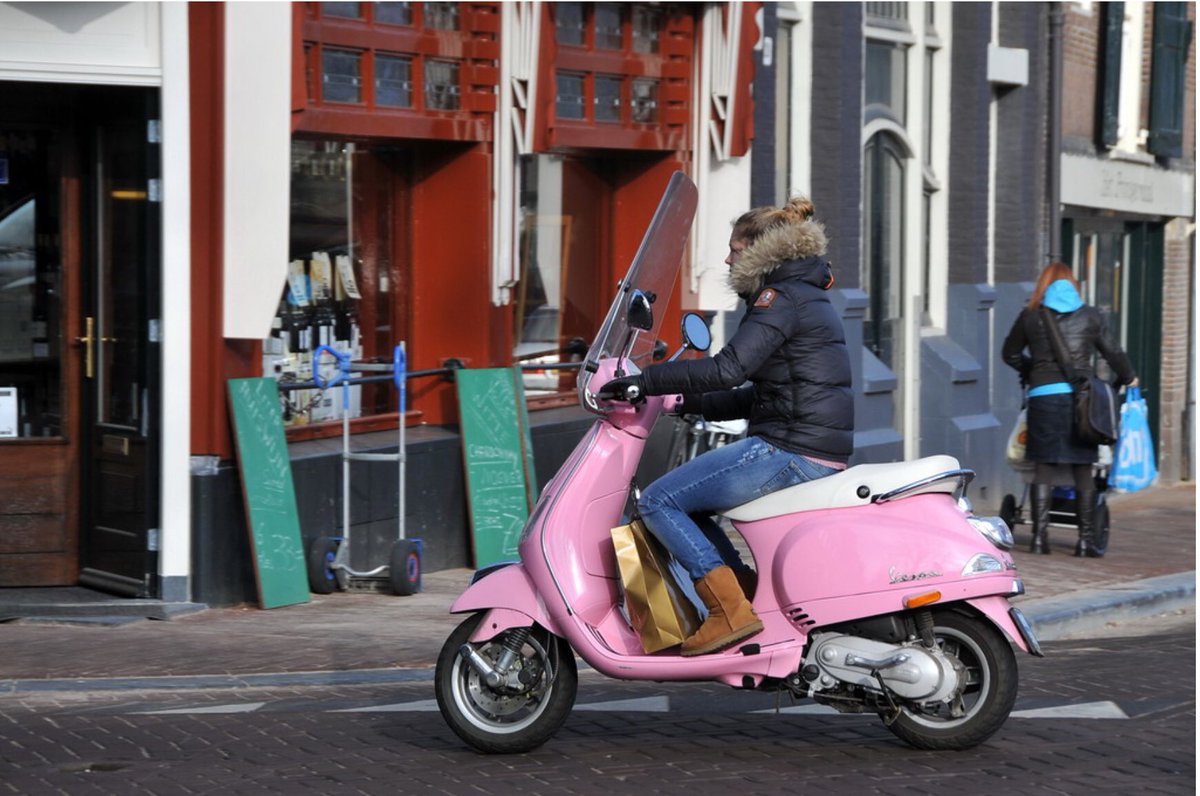
Because I live in a neighbourhood that was once home to a large Jewish community, I thought I might arrest your attention daily for those suffering in Yemen, Syria and elsewhere, with a visit to one of the little copper memorials that mark the homes of murdered Jewish neighbours.
Georg Hornstein (8 Dec. 1900) lived just around the corner from me, not more than a hundred paces from my front door. He was arrested on 6 March 1942 and murdered in Buchenwald on 3 Sept. 1942. The life story of this German-Jewish resistance fighter is astonishing. 

Having fought in the German army in WWI, Georg emigrated to the Netherlands when the Nazis seized power. During the Spanish Civil War, he enlisted in the German Thälmann Battalion of the International Brigades.
Read more about Georg Hornstein here: en.wikipedia.org/wiki/Georg_Hor…
Read more about Georg Hornstein here: en.wikipedia.org/wiki/Georg_Hor…

Leendeert Menist (18-09-1894) and Dora (Duifje) Swelheim (20-01-1907) lived about 350 metres from my front door. Leendert was a travelling salesman. The couple got engaged in the summer of 1926 and were married in October 1929. 



The couple were first taken to the Dutch concentration camp Westerbork, before being deported to Sobibor, where they were both murdered on 9 July 1943. Duifje was 36 years old and Leendert was 48.
Duifje’s father was a warden at the synagogue I can see from my window.
Duifje’s father was a warden at the synagogue I can see from my window.

The warden of a synagogue is known as the “gabbai” or “shamash”, which literally means “servant”. The shamash is an assistant to the rabbi and assists in the running of services.
You’ll find more about the duties of the shamash here: en.wikipedia.org/wiki/Gabbai
You’ll find more about the duties of the shamash here: en.wikipedia.org/wiki/Gabbai
The widow Abigaël de Haan-Buitenkant lived about 100 paces from my front door. Upon hearing that her daughter Belia and granddaughters Bertine and Ingrid had been picked up, she turned herself in, hoping that she might help them in some way. 

Abigaël was immediately deported to Sobibor, where she was murdered on the 28th of May 1943 at the age of 68. In a twist of macabre irony and good fortune, Belia, Bertine and Ingrid all survived the war, as did their husband and father, Meijer.
From my balcony, I can see the 1st-floor balcony where the Vleeschhouwers lived. Simon and his wife Sara were both 52 when they were imprisoned in Westerbork concentration camp together with their daughter Flora (25), who was studying to be a lawyer. 

Simon and Sara were both murdered in Auschwitz on 10 September 1943. Flora was murdered later that same year on 30 November. A second, unnamed child survived the war. Apart from these photos of Sara and Simon, I was unable to find much information about the family. However... 



Vleeschhouwer is a somewhat archaic Dutch word for butcher. The name probably refers to the profession of Simon’s ancestors in the Netherlands, where a law was passed in 1632 prohibiting Jews from practicing almost all trades, severely limiting their career options.
It is also interesting to note that the Zuider Amstellaan, where the Vleeschhouwers lived, no longer exists. It was renamed after the war, together with the Noorder Amstellaan. They are now known as the Rooseveltlaan and Churchillaan.
Here's a compendium of my posts on the copper memorial plaques in my neighbourhood, which I hope to update daily. If you happen to take a photo of one of these "stumbling stones", drop it here and I'll try to trace the history of those commemorated. facebook.com/notes/richard-… 

These memorial plaques look more polished than those I posted previously, probably because the De Groot’s front door is located in a small arcade at the bustling intersection near my house, which means they are less exposed to the elements, save the shuffling soles of passersby. 

The German security police headed by Willy Lages sealed off the factory’s exits and arrested all the Jewish staff. Levie (38), Harriëtte (29) and Marianna (36) were deported to Sobibor, where they were murdered in May and July 1943. 





Rachel de Groot was deported to Auschwitz, where she was murdered on 3 December 1942 at the age of 26.
Levie and Harriëtte also had a son, Marcus, who was born in 1939 and survived the war.
Levie and Harriëtte also had a son, Marcus, who was born in 1939 and survived the war.

The stumbling stones are rather deceptive, I’ve discovered, because our street would be paved with bronze plaques if all our murdered neighbours were commemorated. This photo of Jewish families awaiting deportation is thought date from 20 June 1943. 

People have packed suitcases and bedding, waiting patiently, lads on the corner chatting to one another, a husband consoling his wife in the foreground, neighbours leaning out the window on the first floor.
Perhaps you recognise this corner from photos I’ve posted previously.
Perhaps you recognise this corner from photos I’ve posted previously.

So I’ve decided to rename this thread Murdered Neighbours and I’ll be shifting my focus to the histories of the many un-commemorated neighbours who were deported from almost every house in our street. I’ll also be having a chat with my neighbour, Gert, who posted this photo. 

Just to remind you what started all this. Many people in Western countries, particularly in the Commonwealth and North America, have a heroic and somewhat simplistic view of war and armed intervention. They are less aware of the civilian casualties and consequences.
In Amsterdam, particularly in my neighbourhood, I have become acutely aware of past horrors just below the surface. It is very easy to say, “Never forget!” but quite another to actually look those who were taken and murdered in the eye. So here I am, spoiling your day.
My eye is repeatedly drawn by the ornate tea cups in the foreground, as if a ritual has been disturbed - "Grab the camera, Henk" - to capture the moment.
This project just took a macabre turn, because I now fully understand how much work it will take to share biographies for all my un-commemorated, murdered neighbours. To do them justice, I would need to stop working on my book, which is not an option right now.
So I’m calling on friends who read Dutch to help with the preparatory work, which entails gathering information and images for four or five tweets on each person or family.
To give you some idea of the magnitude: this is the end of the Lekstraat nearest to our house.
To give you some idea of the magnitude: this is the end of the Lekstraat nearest to our house.

If you go to the site above and click on the < next to the address, you move down the street. Each new address is a home where our Jewish neighbours once lived. If you scroll down a little, you’ll find their names and dates of birth and death. Be warned, it may be overwhelming.
My friend @Touaregtweet has been helping me gather information about my murdered neighbours, and I can’t thank her enough. Before we take you into their homes and lives, let me explain the architecture of the houses on the even side of the Lekstraat in Amsterdam. 

The ground floor is known as "huis/hs" (house). Above that is a “bell floor”, which is a hallway with four doors, which is accessible via the stairway under the arch. The four doors lead to the apartments on the 1st floor (left and right) and to two stairways to the upper floors.
Although this certainly wasn’t intended by the architect, it is quite simple for one person armed with a gun to guard the stairway under the arch, thereby sealing off the route of escape of any people trying to leave the eight apartments on the upper floors to the left and right.
My partner and I live on the third floor of the building marked in the photo. The first neighbour I’d like to introduce is Johanna Schatz-Kapp, our downstairs neighbour (162-II), a phys-ed teacher and masseuse, who fled from Worms in Germany in 1933 when Hitler took power. 

The story I’d like to tell about Hanne is how she came to be buried in grave no. 1132 under the name “Johanna de Jong” in the village of Raalte, where she’d sought refuge after escaping from a German army truck that was strafed by an RAF fighter aircraft.
This was one of the last deportations to Camp Westerbork from Amsterdam before the war ended. The truck was shot to pieces on 6 February 1945. Seven prisoners were killed instantly, six more were fatally wounded. Despite a wounded shoulder and leg, Hanne managed to escape.
After being treated secretly in hospital, she was reunited with her husband, Martijn Schatz. They went into hiding on a farm near Raalte. Sadly, Hanne contracted diphtheria, a highly contagious and deadly disease. Despite the ministrations of a doctor, she died on 29 March 1945.
Because it was risky to bury Hanne in keeping with Jewish traditions, she was given the fake identity Johanna de Jong and buried at the public cemetery in Raalte in grave no. 1132, where she was only formally identified and given a proper gravestone in July 2018.
Hanne was our closest neighbour on the Lekstraat, living in the apartment under ours. There’s a lot more to tell about her, but there are so many other neighbours who deserve to be commemorated.
PS: I only just noticed that the labels were missing from the first photo.
PS: I only just noticed that the labels were missing from the first photo.

Oddly, this isn’t the first time I’ve lived in this block in the Lekstraat. When I arrived in Amsterdam in 1986, I first stayed with my grandmother, Tante Greet, who lived on the ground floor you see above (No. 164-huis), which is directly below the apartment where we live today.
Coincidentally, I too was something of a refugee at the time, having left South Africa to avoid conscription into the army under apartheid. Tante Greet (Aunt Greta) was actually my grandfather’s second wife. They worked together after the war, fell in love and got married. 

Aunt Greta’s story is also fascinating, but I need to gather all the facts and get permission before I can share it here. What I can tell you is that she worked with my grandfather and mother at the Foundation for Supervision of Political Delinquents (FSPD) after the war.
This organisation was established to reintroduce collaborators and other political delinquents into Dutch society after they had completed their prison sentence. The FSPD also assisted the families of those imprisoned, who were generally unwelcome and unwanted everywhere.
My grandfather was asked to establish the Amsterdam branch of the FSPD, because he had previously done community work for the Salvation Army and had later worked as one of the country’s first probation officers, rehabilitating former prisoners and assisting their families.
All this doesn’t make me an expert, of course, but I have gained some insight, via my family, into the myriad consequences of war. As some of you will recall, I previously posted a thread of excerpts from my grandmother’s letters, documenting the winter famine of 1944-’45.
All of which brings me back to the topic of refugees and those persecuted in wars past and present, many of whom – like myself – built new lives from themselves here in Amsterdam. Before 1940, that was also the case for refugees from Nazi Germany, like Hanna and Georg.
The same goes for the Tugendreich Family – Heinz, his wife Frida and mother Minna – who fled from Nazi Germany and settled at Lekstraat 164-huis in Amsterdam, where my Aunt Greta later lived and where my life in Amsterdam began.
joodsmonument.nl/en/page/93342/…
joodsmonument.nl/en/page/93342/…
Because overlong threads can be very inconvenient, I've decided to post shorter threads, which I'll then add to the longer thread as links (see below). Please let me know what you think. Thanks!
https://twitter.com/RicharddeNooy/status/1159023382664482816
• • •
Missing some Tweet in this thread? You can try to
force a refresh







